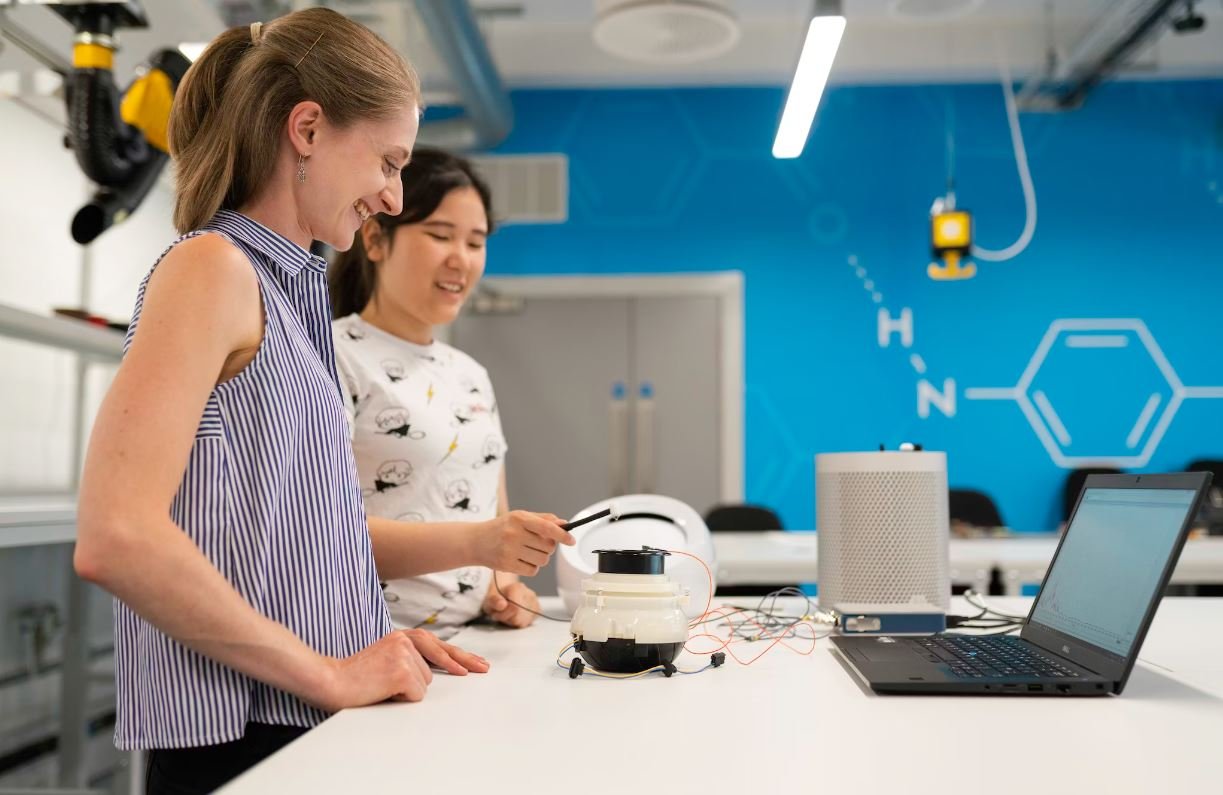Language Processing Part of Brain
The human brain is a complex organ responsible for a wide range of cognitive functions and processes. One of the most fascinating aspects of the brain is its ability to process language. Language processing refers to the way our brains understand and produce language, allowing us to communicate, comprehend, and express ourselves effectively.
Key Takeaways:
- Language processing is a fundamental aspect of human cognition.
- The brain dedicates specific regions for different language processes.
- Broca’s area and Wernicke’s area play vital roles in language production and comprehension.
Language processing involves various interconnected regions of the brain, each with specific functions related to language tasks. **Broca’s area**, located in the frontal lobe of the dominant hemisphere (typically the left hemisphere for right-handed individuals), is responsible for language production. It coordinates the movements required for speech and helps organize grammatical structures. On the other hand, **Wernicke’s area**, situated in the temporal lobe, is involved in language comprehension. It aids in understanding spoken and written language by interpreting the meaning of words and sentences.
*It is intriguing to note the specialization of certain brain areas for language-related tasks*
These two areas are connected by a bundle of nerves known as the *arcuate fasciculus*. This pathway facilitates the flow of information between Broca’s area and Wernicke’s area, allowing for seamless language processing. Damage to either of these areas or the connecting pathway can result in language deficits, such as aphasia, where individuals struggle with language production or comprehension.
Language Processing and Brain Regions:
| Brain Region | Main Function |
|---|---|
| Broca’s Area | Language Production |
| Wernicke’s Area | Language Comprehension |
*Broca’s area and Wernicke’s area are crucial for language-related processes*
Additionally, language processing involves other brain regions that contribute to different aspects of language, such as semantics, syntax, and phonetics. These regions work together to ensure effective communication. For example, the **angular gyrus** helps with language tasks involving reading and writing, while the **supramarginal gyrus** contributes to phonological processing, like recognizing and manipulating sounds in speech.
Language Processing and Brain Regions:
| Brain Region | Function |
|---|---|
| Broca’s Area | Language Production |
| Wernicke’s Area | Language Comprehension |
| Angular Gyrus | Reading and Writing |
| Supramarginal Gyrus | Phonological Processing |
*Multiple brain regions contribute to various language processing tasks*
Moreover, the brain’s ability to process language is not limited to spoken and written communication. **Sign language**, for instance, involves different neural mechanisms as it relies on visual and motor areas of the brain. In these cases, the neural circuits responsible for processing visual stimuli and coordinating hand movements play essential roles in understanding and producing sign language.
Understanding the intricate network of brain regions involved in language processing provides valuable insights into neurological disorders affecting language abilities. Conditions like **aphasia** resulting from stroke or traumatic brain injury highlight the importance of these language-associated brain regions in our daily lives.
Language Processing and Sign Language:
| Language Type | Main Neural Mechanisms |
|---|---|
| Spoken/Written Language | Broca’s area, Wernicke’s area, Angular gyrus, Supramarginal gyrus |
| Sign Language | Visual and Motor Areas of the Brain |
*Sign language involves visual and motor areas of the brain for communication*
In summary, language processing is an intricate cognitive function that involves various specialized regions of the brain. Broca’s area and Wernicke’s area play vital roles in language production and comprehension respectively, while other brain regions contribute to different language tasks. Understanding the brain’s involvement in language processing enhances our knowledge of human communication and aids in the diagnosis and treatment of language-related disorders.

Common Misconceptions
Misconception 1: Language processing is solely controlled by one part of the brain.
One of the most common misconceptions about language processing is that it is controlled by a single area of the brain. In reality, language processing is a complex cognitive function that relies on the interaction of multiple brain regions. While the left hemisphere, particularly the Broca’s area and Wernicke’s area, play a significant role in language production and comprehension respectively, other areas such as the prefrontal cortex and temporal lobes are also involved.
- The left hemisphere is more dominant in right-handed individuals.
- Both hemispheres contribute to language processing, but the left hemisphere tends to have a more specialized role.
- Damage to specific brain regions can result in language impairments, but the precise location of these regions can vary between individuals.
Misconception 2: Language processing abilities are hardwired and cannot be improved.
Another misconception is that language processing abilities are fixed and cannot be improved. While it is true that certain aspects of language processing, such as the acquisition of a native language, occur naturally during early development, there is evidence to suggest that language skills can be developed and refined throughout life. Studies have shown that engaging in activities such as reading, learning new languages, and practicing verbal communication can enhance language processing abilities and even restructure the brain.
- Language processing abilities are influenced by both genes and environmental factors.
- Regular exposure to language-rich environments can positively impact language processing skills.
- There are various techniques, such as speech therapy and language training programs, that can aid individuals in improving their language processing abilities.
Misconception 3: Language processing is the same for everyone.
A common misconception is that language processing is a universal process that works the same way for everyone. However, individual differences in language processing abilities are well-documented. Factors such as linguistic background, cognitive abilities, and exposure to different languages can influence how each person processes and understands language. Additionally, age, education, and cultural experiences also shape language processing abilities.
- The brain’s plasticity enables language processing to adapt and change based on individual experiences and environmental influences.
- Bilingual individuals may have unique language processing patterns due to their ability to switch between languages.
- Individuals with certain neurological conditions, such as dyslexia or aphasia, may exhibit specific language processing difficulties.
Misconception 4: Language processing is only based on verbal communication.
Many people assume that language processing is solely based on verbal communication. While verbal communication is an essential aspect of language processing, it is not the only component. Non-verbal cues and visual representations such as facial expressions, body language, and written text also play a crucial role in comprehension and expression of language.
- Non-verbal communication can convey emotions, intentions, and social signals that enhance or clarify verbal messages.
- Written language processing involves different brain regions compared to spoken language processing.
- Individuals with certain conditions, such as autism spectrum disorders, may experience difficulties in understanding and interpreting non-verbal cues.
Misconception 5: Language processing is a conscious and deliberate process.
Contrary to popular belief, language processing is not always a conscious and deliberate process. While we are often aware of our language production and comprehension, a considerable part of language processing occurs at an automatic and unconscious level. Fluent speakers do not consciously think about the rules of grammar or word choice during real-time conversation.
- Automatic language processing allows for fluid and efficient communication.
- Unconscious language processing enables us to understand and respond to language quickly without cognitive effort or awareness.
- In certain situations, conscious processing is necessary, such as when learning a new language or when faced with ambiguous or unfamiliar linguistic content.

The Wernicke’s Area
The Wernicke’s area is a crucial region in the brain responsible for language comprehension and interpretation. Located in the left hemisphere in the posterior part of the superior temporal gyrus, damage to this area can result in various language comprehension disorders.
| Region | Function |
|---|---|
| Wernicke’s Area | Language comprehension and interpretation |
The Broca’s Area
The Broca’s area, situated in the frontal lobe of the left hemisphere, is responsible for speech production and articulation. Damage to this area can lead to expressive language disorders and difficulties in verbal communication.
| Region | Function |
|---|---|
| Broca’s Area | Speech production and articulation |
Arcuate Fasciculus
The arcuate fasciculus is a white matter tract connecting the Wernicke’s and Broca’s areas. It plays a crucial role in the integration of language comprehension and production. Damage to this bundle of fibers can result in disrupted communication between these two language processing centers.
| Region | Function |
|---|---|
| Arcuate Fasciculus | Integration of language comprehension and production |
Angular Gyrus
The angular gyrus, located in the parietal lobe of the left hemisphere, is involved in various language-related processes, including reading, writing, and semantic processing. It facilitates the connection between visual and auditory information during language tasks.
| Region | Function |
|---|---|
| Angular Gyrus | Reading, writing, and semantic processing |
Superior Temporal Sulcus
The superior temporal sulcus, situated in the lateral surface of the brain, plays a significant role in processing speech sounds and enables individuals to perceive and recognize different phonetic features.
| Region | Function |
|---|---|
| Superior Temporal Sulcus | Processing speech sounds and phonetic feature recognition |
Primary Auditory Cortex
The primary auditory cortex, located in the temporal lobe, is responsible for the initial processing of auditory information. It is involved in the perception and discrimination of sounds, including speech and language stimuli.
| Region | Function |
|---|---|
| Primary Auditory Cortex | Initial processing of auditory information |
Supplementary Motor Area
The supplementary motor area, situated in the frontal lobe of the dominant hemisphere, plays a role in planning and executing complex motor movements, including those involved in speech production. It helps coordinate the sequence of movements required for fluent speech.
| Region | Function |
|---|---|
| Supplementary Motor Area | Planning and executing complex motor movements for speech |
Inferior Frontal Gyrus
The inferior frontal gyrus, part of the frontal lobe, is crucial for a variety of language functions, including syntactic processing, word retrieval, and inhibitory control. It aids in the selection and production of appropriate words during language tasks.
| Region | Function |
|---|---|
| Inferior Frontal Gyrus | Syntactic processing, word retrieval, and inhibitory control |
Heschl’s Gyrus
Heschl’s gyrus, located in the temporal lobe, is involved in the processing of auditory information, particularly in relation to speech perception. It aids in the identification and discrimination of different sounds, including phonemes and tonal patterns.
| Region | Function |
|---|---|
| Heschl’s Gyrus | Processing of auditory information, including speech perception |
Conclusion
The human brain exhibits remarkable specialization when it comes to language processing. Various regions, such as the Wernicke’s area, Broca’s area, arcuate fasciculus, and others, work together to enable our ability to comprehend and produce language. Understanding the intricate network of language-related areas provides valuable insights into the complexity of human communication and cognition.
Frequently Asked Questions
What is language processing?
Where is the language processing part of the brain located?
What happens if the language processing part of the brain is damaged?
Can the language processing part of the brain change or adapt?
How does the language processing part of the brain develop in children?
Are multiple languages processed differently in the brain?
Can language processing be affected by neurological conditions?
Is language processing solely dependent on the brain?
Are there any ongoing studies about language processing?
How can individuals enhance their language processing skills?




